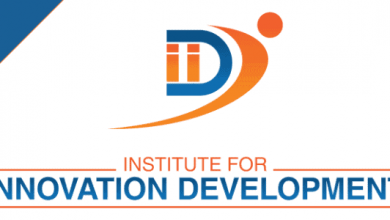Do You Make Good Money, but You're Not Rich Yet? You Might be a HENRY.


Are you a “High Earner Not Rich Yet” (HENRY)? Learn how to start financially planning for your future and growing your wealth and meet the financial advisors who can help.
What does it mean to be “rich”? It seems that being rich is something that almost everyone strives for, yet nobody has a clear definition. In the past, if you earned six figures (over $100,000 a year), you were automatically considered “rich,” but that has changed over time with the emergence of HENRYs.
HENRY stands for “High Earner Not Rich Yet” and is used to describe (typically) young workers who make a lot of money (from $250,000 – $500,000 household income) yet haven’t been able to build meaningful wealth due to various expenses like student loans, childcare, taxes, and more. This abbreviation originated in 2003 when a writer at Fortune Magazine coined a term for those who make a high salary yet aren’t quite able to acquire a high net worth.
Though it might sound crazy that someone earning so much money could be struggling financially, it is difficult for many individuals and families living in high-cost-of-living areas (like New York City, San Francisco, and Seattle) to save up any money after expenses.

If you are a HENRY yourself, it’s likely that you know it already and are feeling pretty trapped in your situation. This article gives you all the tools you need to start financially planning for your future and growing your wealth. We’ll also introduce you to financial advisors who specialize in helping HENRYs enjoy life more with less money stress.
Table of contents
Financial Challenges Faced by HENRYs
A study by Financial Advisor magazine found that one out of every four families making over $150,000 is living paycheck to paycheck. Why is it that even for these “big earners,” saving money is so hard?
Before diving into personal finance details for HENRYs, it’s essential to understand why these high earners are having such a hard time building up wealth. Here are a few of the most pressing financial challenges faced by HENRYs.
Student Loan Debt
According to Education Data, the average student loan debt is $40,000 per person. For HENRYs, this amount is twice as high at around $80,000. Most HENRYs have additional degrees (think doctors, lawyers, architects, etc.), have been in school for longer, and owe educational institutions more money.
Lifestyle Creep
Most HENRYs also suffer from something called lifestyle creep or lifestyle inflation. This is basically when increased income also brings about increased spending, usually when luxuries become perceived necessities and costs subsequently balloon. Some of the ways this can manifest itself are:
- Getting a bigger house (which brings about a bigger mortgage)
- Buying the fancier car (that also comes with larger car payments)
- Shopping for nicer clothes
- Traveling more often
- Using credit cards more carelessly
Home Prices
Earning six figures doesn’t mean the same thing depending on where you live. For example, $100,000 might go a long way in Cedar Park, Texas, but in San Francisco, California (where the median home price is over $1 million), it’s not even enough to put a downpayment on a home.
HENRYs might be struggling because the jobs that typically accompany their high salary are usually situated in high-cost-of-living areas like New York, Toronto, and San Francisco.
Inflation
Another factor that heavily hits HENRYs (and all working people) is inflation. It might seem like the average wage has risen over the past two decades, but this notion quickly falls apart when factoring in inflation and the rising cost of goods.
Expectations
The final thing that impacts high earners’ ability to save is their expectations of what their lives should look like. Many of these young professionals suffer from FOMO or “Fear Of Missing Out” and try to match their lives to those of their peers. This can lead to increased unnecessary spending trying to “keep up with the Joneses” of their time.
Financial Planning for HENRYs
Given all the things working against HENRYs, it’s easy to throw your hands up in the air and give up, but that would be a drastic mistake. As a HENRY, you already have a good income, which means you can overcome your financial challenges with proper financial planning. It’s important to remember that you have control over your finances and, ultimately, the trajectory in which you build wealth.
Here are some tips that will help financial planning for HENRYs (how HENRYs can build their wealth instead of spending it)!
Get Out of Debt
Few things can hurt your ability to build wealth as much as debt will. It doesn’t matter how much money you make if you fail to pay off your loan obligations. The key to paying off debt is to make it a priority. Before going through and spending your money on monthly expenses, dedicate a portion of it (20% or whatever amount you can stomach) to paying down your debt. When it comes time actually to choose between different kinds of debt, you can select between a few different methods:
- The Snowball Method – Dave Ramsey’s favorite method of debt repayment Snowball Method is when you repay the smallest amount of debt first, then build momentum and work your way up.
- The Rainshower Method – the Rainshower Method is when you take your money and evenly allocate it amongst all the debt you need to pay. It is simple, easy to execute, and encourages debt repayment.
- The Highest Interest Method – not all debts are created equal. When it comes to paying off your debt, one way to do it is to start with the source with the highest interest rate (typically credit cards) and pay it off first, then work your way down.
Create a Budget
It’s extremely tough to improve in an area you don’t track. Tracking your monthly income and expenses can be a great start towards creating a monthly budget. A monthly budget is an effective tool for helping you live within your means and save up money for your future.
You can easily create a budget in a bullet journal or on something like Excel, or check out some of these budget apps, which make it easy for you:
- YNAB – You Need A Budget
- Mint
- Pocket Guard
- Personal Capital
- Zeta
Start to Save Money
Once you’ve started tracking your expenses and following a budget, it will be much easier to cut down on costs. Make sure to try to identify what is a want and what is a need in your monthly spending and aggressively cut down on the “wants.” This can include cutting down on dining out, canceling unnecessary monthly subscriptions, and cutting back on your grocery bills.
Also, be sure to make the most of your employer’s retirement savings plan. If you haven’t already, max sure to try and max out your 401k and ask your employer if they have any “employer-match” programs.
Earn Additional Income
Sometimes, saving aggressively isn’t enough (maybe you live in a high-cost-of-living area where cutting expenses is just not feasible). Consider earning additional income outside of your regular job if this is the case. This can include:
- Doing part-time consulting work in your area of expertise
- Tutoring local students (either in person or online)
- Starting a business on the side
- Doing freelance work (and building your network through your regular job)
- Selling or flipping used products
Nowadays, there are more ways to make money than ever. All you have to do is carve out the time and dedication to commit to a side hustle and stick to it!
Consider Hiring a Financial Advisor
Maybe you’re sitting there shaking your head and thinking, “these all sound like handy tips, but I just don’t have the time or energy to implement any of them.” If this is the case and you’re feeling overwhelmed, it might be wise to consider hiring a financial advisor. You’ll likely be busy with work, and when you’re not at work, you’ll want to spend time with family, so a financial advisor can serve as a guide to help you invest and build a plan to achieve your goals. Here are some questions to ask yourself to figure out if hiring a financial advisor is the right choice for you:
- Do you have a good knowledge of investments and know how best to allocate your own money?
- Do you have the time to monitor financial instruments consistently and make adjustments if/when needed?
- Are you an avid reader of financial publications and updated on the latest research regarding financial topics?
If you answered yes to these questions, managing your own money will probably be in your best interest. But if not, consider meeting up with a financial advisor for a consultation.
The Bottom Line: Financial Planning for HENRYs
You might be a HENRY if you’re a high-income earner yet can’t seem to save any money at the end of the month after all your expenses. Coined in 2003, HENRY stands for High Earners Not Rich Yet and is used to describe those with a high salary who struggle to amass meaningful wealth. Though HENRYs can be people of any age, the most common occurrence in society are HENRY millennials.
If you’re a HENRY and frustrated at your life circumstance, this article has provided you with tools that you can use to turn your finances around and start building wealth for yourself and your family. The key is to start experimenting and implementing these tips early. The sooner you start, the sooner you’ll break out of the “rat race” and start enjoying life.
So what are you waiting for? Start financially planning for yourself, whether that means budgeting, earning an additional income, or even hiring a financial advisor. Your future, wealthier self will thank you for it.
Find Financial Advisors for HENRYs on Wealthtender
📍 Click on a pin in the map view below for a preview of financial advisors who specialize in serving HENRYs and can help you reach your money goals with a personalized plan. Or choose the grid view to search our directory of financial advisors with additional filtering options.
📍Double-click or pinch pins to view more.

About the Author
Jeff Fang
Jeff is a Harvard 2025 student who is passionate about learning, living, and sharing all things personal finance-related. He has experience working in the financial industry and enjoys the pursuit of financial freedom. Outside of blogging, he loves to cook, read, and golf in his spare time.





